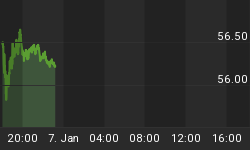Dead on target at the beginning of the new year, 76-year-old Byron Wien again published his annual list of surprises to expect in 2010. Wien, Vice Chairman of Blackstone Advisory Services and one of Wall Street's best known veterans, has been publishing his list of economic, market and political surprises since 1986.
Reviewing Wien's 2009 list, he was very accurate with the direction of most of his predictions.
He foresaw a second-half recovery in the US economy, and the S&P 500 Index rising to 1,200 (up from 903 at the end of 2008 to 1,115 by December 31, 2009). He also predicted: "The ten-year US Treasury yield climbs to 4% [up from 2.24% to 3.84%]. Later in the year, as the economy shows signs of recovery, economists and investors shift their mood from concern about deflation to worries about inflation. A weak dollar, rapid growth in money supply and record-setting deficits (over $1 trillion) are behind the change." Spot on.
Wien also expected the gold and oil prices to climb to $1,200 and $80 respectively - a feat accomplised in December.
He believes his ten surprises have at least a 50% chance of occurring at some point during the year. Although this is not a very high probability, his predictions nevertheless make for stimulating reading. His list for 2010 follows below.
1. The United States economy grows at a stronger than expected 5% real rate during the year and the unemployment level drops below 9%. Exports, inventory building and technology spending lead the way. Standard and Poor's 500 operating earnings come in above $80.
2. The Federal Reserve decides the economy is strong enough for them to move away from zero interest rate policy. In a series of successive hikes beginning in the second quarter the Federal funds rate reaches 2% by year-end.
3. Heavy borrowing by the US Treasury and some reluctance by foreign central banks to keep buying notes and bonds drives the yield on the 10-year Treasury above 5.5%. Banks loan more to corporations and individuals and pull away from the carry trade, thereby reducing demand for Treasuries. Obama says, "The suits are finally listening".
4. In a roller coaster year the Standard and Poor's 500 rallies to 1,300 in the first half and then runs out of steam and declines to 1,000, ending where it started at 1115.10. Even though the economy is strong and earnings exceed expectations, rising interest rates and full valuations present a problem. Concern about longer term growth and obligations to reduce leverage at both the public and private level unsettle investors.
5. Because it is significantly undervalued on a purchasing power parity basis, the dollar rallies against the yen and the euro. It exceeds 100 on the yen and the euro drops below $1.30 as the long slide of the greenback is interrupted. Longer term prospects remain uncertain.
6. Japan stands out as the best performing major industrialized market in the world as its currency weakens and its exports improve. Investors focus on the attractive valuations of dozens of medium sized companies in a market selling at one quarter of its 1989 high. The Nikkei 225 rises above 12,000.
7. Believing he must be a leader in climate control initiatives, President Obama endorses legislation favorable for nuclear power development. Arguing that going nuclear is essential for the environment, will create jobs and reduce costs, Congress passes bills providing loans and subsidies for new plants, the first since 1979. Coal accounts for about 50% of electrical power generation, and Obama wants to reduce that to 25% by 2020.
8. The improvement in the US economy energizes the Obama administration. The White House undergoes some reorganization and regains its momentum. In the November Congressional election the Democrats only lose 20 seats, much less than expected.
9. When it finally passes, financial service legislation, like the health care bill, proves to be softer on the industry than originally feared. There is greater consumer protection, more transparency, tighter restriction of leverage and increased scrutiny of derivatives, but the regulatory changes for investment bankers and hedge funds are not onerous. Trading volume and merger activity increases; financial service stocks become exceptional performers in the US market.
10. Civil unrest in Iran reaches a crescendo. Ayatollah Khameini pushes out Mahmoud Ahmadinejad in favor of a more public relations adept leader. Economic improvement becomes the key issue and anti-Israel rhetoric subsides. Talks with the US and Europe begin but the country remains a nuclear threat. Pakistan becomes the hotspot in the region because of the weak government there, anti-American sentiment, active terrorist groups and concerns about the security of the country's nuclear arsenal.
Source: PR-inside.com, January 4, 2009.
Did you enjoy this post? If so, click here to subscribe to updates to Investment Postcards from Cape Town by e-mail.















